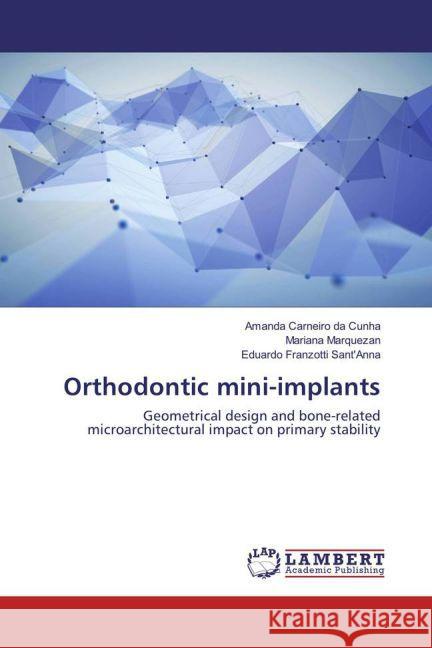Orthodontic mini-implants : Geometrical design and bone-related microarchitectural impact on primary stability » książka
Orthodontic mini-implants : Geometrical design and bone-related microarchitectural impact on primary stability
ISBN-13: 9783659866524 / Angielski / Miękka / 2016 / 60 str.
Orthodontic mini-implants : Geometrical design and bone-related microarchitectural impact on primary stability
ISBN-13: 9783659866524 / Angielski / Miękka / 2016 / 60 str.
(netto: 123,11 VAT: 5%)
Najniższa cena z 30 dni: 128,97
ok. 10-14 dni roboczych.
Darmowa dostawa!
This study objective was to verify the association among the geometric design of distinct orthodontic mini-implants (MIs), primary stability, and insertion site quality. Four types of MIs were allocated according to their characteristics. The valuation parameters were obtained by Scanning Electron Microscope images, and the measurements were carried out with Image-Pro® Insight software. Sixty sections were taken from iliac and pubic bovine bones and analyzed with a microcomputed tomography system. Primary stability was evaluated by insertion torque (IT), Periotest® (PTV) and pull-out strength (PS). Increased IT values were found in groups with major conicity and lower thread angle (p_0.05). Pearson's correlation test indicated a positive correlation between thread depth and IT, and a negative one between thread depth and PTV (p_0.05). There was no statistic difference among the MI groups in lower density bones. It can be concluded that: 1) MIs presented a high geometric variability; 2) MI mechanical performance is dependent on geometry and bone quality; 3) several geometric factors such as MI shape, conicity and thread details may be preferred according to insertion site quality.











